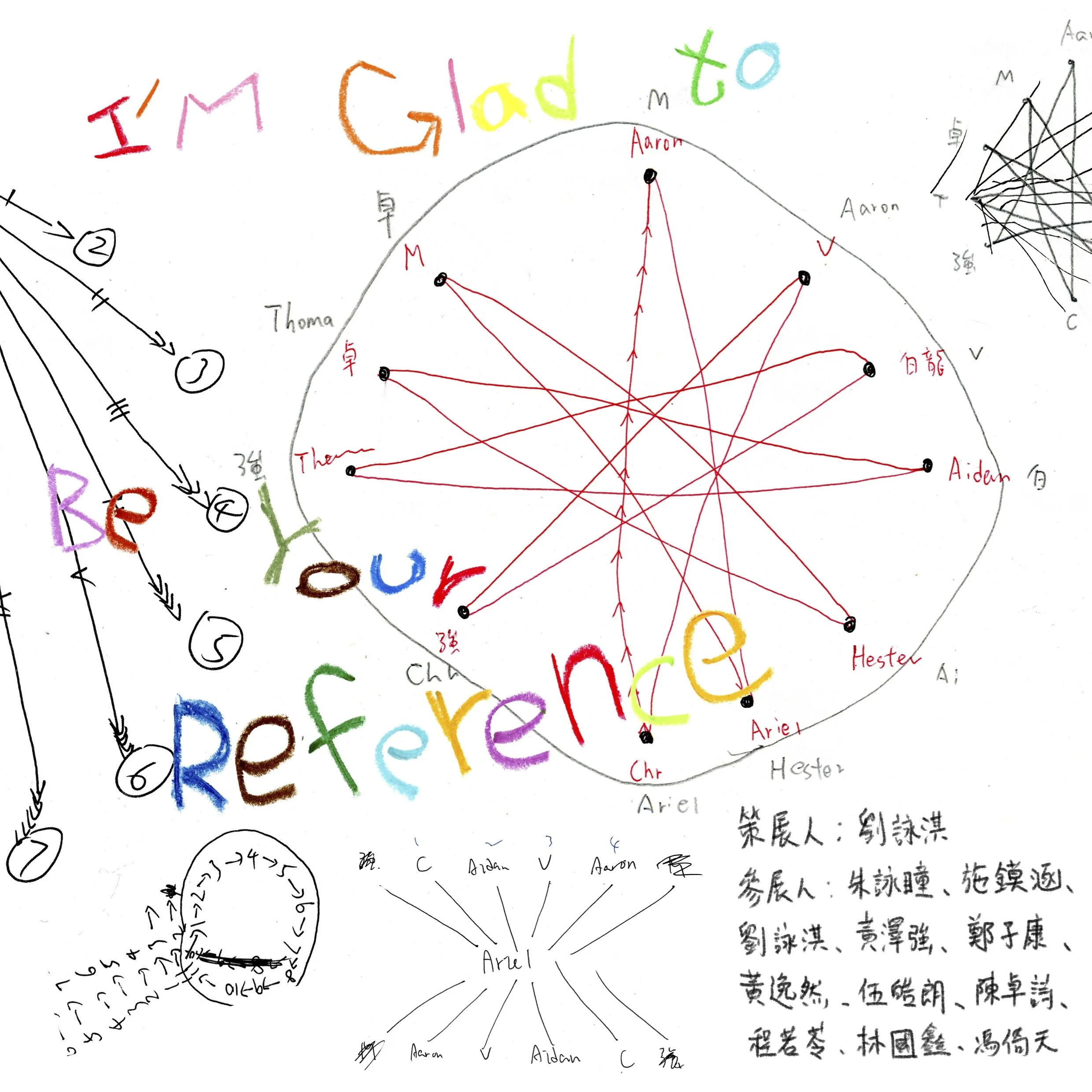原文節錄:
展覽概念的雛形原是些散亂的想法:關於傳意、解讀與誤讀,以致脫離原作者本意,我甚至並沒想過以策展的形式進行。後來有陣子在討論創作中「何謂抄襲的界線」,我就想,何不直接做個名正言順「抄襲」的展覽?如果做創作不只為自己服務,而是集體完成一件事;以自身角度出發,但不只局限於自身視野,那有多好,於是便萌生了做藝術版「以訛傳訛」的念頭。
11位參展人一起定立遊戲規則,在歷時11個星期的旅程共創作了111份作品,或許因為時間所限,太多作品都無刻意修飾,反而有種真摯的感覺。我也從未干預他們的創作,對我來說重要的不是作品的高與低,而係人與人、作品與人之間的關係和脈絡,我希望各參展人有最大的空間呈現最原始和真實的狀態,而不需背負自我質疑和被批評的壓力。雖然幾乎每個星期也有參展人跟我說不明白上家在做什麼,或是覺得自己做得不好,但正正因為這些缺口,承接他人的創作才有意義。
Excerpt from the Original Text:
The concept for the exhibition began as a collection of scattered ideas—thoughts about communication, interpretation, and misinterpretation, even to the point of deviating from the original author’s intent. Curating an exhibition wasn’t something I initially had in mind. Later, during discussions about "the boundaries of plagiarism" in art, I thought, why not curate an exhibition that openly explores the idea of “plagiarism”? How amazing would it be if creating wasn’t just a solitary act but a collective effort—something that starts from an individual perspective but isn’t limited by it? That’s how the idea of an artistic version of “Chinese whispers” came to life.
Together, 11 participants set the rules for the project. Over the course of 11 weeks, they collectively created 111 works. Perhaps because of the time constraints, many of the pieces were left unpolished, having a genuine feel. I never interfered with their creative process; what mattered to me was not the quality of the individual works but the relationships and contexts between the artists and their pieces. I wanted each participant to have the freedom to present their most authentic and true self, without the burden of self-doubt or the pressure of criticism.
Although almost every week, participants would express confusion about what the previous artist was doing or feel that their own work fell short, it is precisely these gaps that make engaging with others' creations meaningful.
I’m Glad to Be Your Reference
策展2024Curated Exhibition2024


